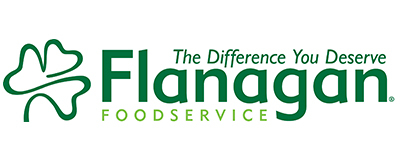
We collect basic website visitor information on this website and store it in cookies. We also utilize Google Analytics to track page view information to assist us in improving our website.
Introducing the new Ocean Wise.
On World Oceans Day (Thursday, June 8, 2017), Ocean Wise unveiled a new logo to complement their new venture: along with the Vancouver Aquarium, Ocean Wise has launched a global conservation organization and a digital storytelling hub to inspire the next generation of ocean leaders.
The name of this new organization is Ocean Wise.
The initial Ocean Wise (sustainable seafood program of which Flanagan Foodservice is a proud partner), was founded by the Vancouver Aquarium in 2005. The program has expanded from 16 partners to 700 partners with thousands of locations across Canada.
As a result of its efforts to grow and the support and passion of its partners, Ocean Wise has been synonymous with being just that: wise about oceans. The new Ocean Wise organization will be supported by four key pillars: education, research, engagement and aquariums.
To learn more about the updates to the sustainable seafood program, visit www.ocean.org.

Anita Stewart is an author and food activist, and for her service to and expertise in gastronomy—especially regarding Canadian cuisine—she has been named a Member of the Order of Canada as well as having been installed as Food Laureate of the Ontario Agricultural College at the University of Guelph.
However, Stewart’s contribution to food in Canada is also deeply rooted in the grassroots of what the country is when it comes to the food of everyday life. As founder of the nation’s food celebration “Food Day Canada,” Stewart is dedicated to defining and promoting Canadian ingredients and food from coast to coast to coast.
With the upcoming Food Day Canada celebration slated to take place on August 5—and during the year of Canada’s 150th birthday—we had a chat with Stewart.
Flanagan Foodservice: What is “Shop Like a Canadian”?
Anita Stewart: As Food Day Canada approaches and in honour of Canada’s 150th birthday, we’ve selected 150 ingredients to help us all shop like the Canadians we are.
And those are products grown or raised by Canadian farmers and prepared and packaged by Canadian food companies?
Stewart: Yes. We’ve been looking forward to this for a couple of years now. The shop-like-a-Canadian ingredient list is the big one from my perspective. We’re challenging restaurants from coast to coast to take a look at those ingredients and build a dish. Post it and do the Instagram, Twitter and Facebook thing. Hashtag it Food Day Canada.
Really, my goal is to create a visual album, if you will, of the ingredients and the people who are doing good things coast to coast to coast. It’s going to be a lot of fun and really interesting to watch.
You even have some chefs aboard the “Canada C3” icebreaker that is making a historic journey around the 23,000 kilometers of our coasts. How Canadian is that?
Stewart: The ship is travelling for 150 days around all three coasts. We have 11 Food Day Canada chefs on board on various legs of the journey. They will be cooking for the ship’s crew and the guests on board.
I’m trying to arrange meeting the ship in Campbell River, B.C. Jamie Kennedy and I will be boarding and will be the final chef to Victoria. It’s a pretty cool thing.
You were keynote speaker at Terroir Symposium this past spring. What are your impressions of the state of “Canadian cuisine” after participating?
Stewart: What I see is that things are pretty diverse, actually, and it is pride-filled, for sure. That’s nice to see. The thing that I’m noticing is that younger chefs really get the idea of Canadian ingredients.
It’s funny because the goal for me is to work myself out of a job! I don’t want to do this. I don’t want to have a soapbox all the time. I want chefs to see what they’ve really got here and they are seeing that.
The country is at 150 years but there’s much, much more to its past when it comes to First Nations people and food. How do you see that?
Stewart: Absolutely. They have food traditions which in some ways are more fluid than ours. As settlers arrived, they brought their own seeds and had their own ideas of what food was. They saw what they thought was a barren land and no agriculture to speak of particularly.
The reality was there was a lot of agriculture happening here. The peoples of the plains moved to their food sources whereas when you have more settled areas—such as what became southwestern Ontario—people settled at the food sources. There was a huge food tradition there, but it was still very foraged.”
And the idea of recipes?
Stewart: I laugh when I hear about people asking, ‘Where are [they] going to get First Nations recipes?’ Well, there wasn’t such a thing. There were methods – and that is what is so exciting – and foraging for plant foods and animal foods, which of course happened from coast to coast to coast.
What about food and sustainability?
Stewart: That’s a massive question, and the answer is quite broad. Of course, in our past, if you didn’t sustain your food sources as indigenous hunter-gatherers, you simply died. So you had to sustain those food sources. It was a matter of survival, and in some cases it didn’t work. People did starve to death.
And what about now?
Stewart: As for how things are happening in 2017, the whole idea around foraging and harvesting the wild has become much more front-and-centre for many chefs and even home cooks. But we have to be really cognizant of the fact that we could wipe out whatever it is we are going after unless we really are careful. I mean, you see people with shovels going in for wild leeks—that’s not sustainable. Frankly, when I see them in a local grocery store, I’m horrified. That, to me, is just not sustainable at all. But if we’re careful and respectful, we can do it really well.
Done properly, can it help define something that might be called “Canadian cuisine”?
Stewart: We have so much. That can give us a point of differentiation of our cuisine no matter where we are in Canada that no other nation can emulate. It’s ours!
How is local doing? Do we take it for granted?
Stewart: It depends on who you are talking to. Some people are very conscious of it. But at big grocery stores, there’s a lot of smoke and mirrors there. It’s coming, however, and we still need to push for that.
To learn more about Food Day Canada, visit fooddaycanada.ca.
To learn more about Flanagan's local food items, visit flanagan.ca/shop-local-food.

Restaurant owners and operators have a lot on their plates—literally. From keeping track of labour expenses to managing food cost to ensuring customer satisfaction, you are always concerned with ensuring your restaurant's success. One way to mark this success is by measuring your restaurant's ability to adapt to changing circumstances.
Going green is one of the most important movements affecting commercial food service operations today, and it can be one of the smartest operational decisions you can make for your restaurant. It not only reduces consumption and draws environmentally-conscious customers, but actually saves money for your operation in the long run.
In a recent survey, 62 percent of consumers polled stated that they would prefer to dine at an environmentally-friendly restaurant if given the choice. Making earth-friendly changes in your operation requires a great effort on your part, but that effort is crucial to gaining the allegiance of almost two thirds of diners.
As a restaurant operator, chances are you know exactly what expenses are bogging down your profit and loss statement. What you may not know is that going green can actually save money for your restaurant. By reducing consumption and changing some daily behaviors, your operations can move from guzzling energy to saving money.
Going green involves many transitions, especially in a commercial environment where electricity, gas, water and disposable products are used in vast quantities on a regular basis. Restaurants pollute the earth's atmosphere and water resources every time they open their doors for business. In fact, studies show that commercial kitchens use over twice the energy per square foot than other commercial buildings.
1. Consume less energy with qualified kitchen equipment
Purchase ENERGY STAR® qualified commercial kitchen equipment whenever your old equipment wears out. With efficient equipment, your operation will consume less energy and less water without sacrificing quality. In fact, the money you save in utility bills is often enough to recover the cost of the equipment itself.
2. Establish a start-up and shut-down schedule
Your commercial kitchen equipment may be constantly powered on, running up a high energy bill even during your slowest hours. Develop a schedule that educates kitchen staff when to turn on and when to turn off the equipment to help minimize lost profits.
3. Switch to energy-saving restaurant lighting
A simple to way reduce energy usage and cut down on monthly expenses is to replace your conventional light bulbs with energy-efficient fluorescent lighting. These bulbs produce less heat and more light, putting the energy dollars where they count the most.
4. Use green cleaners in place of conventional cleaners
Green cleaning agents are preferable when it comes to their impact on the environment, meaning that they do not contain harmful chemicals which can contaminate water resources and harm wildlife.
5. Reduce your restaurant's water consumption
Although water is relatively inexpensive, overuse has already begun to affect the global demand for clean and safe drinking water. Install a low-flow pre-rinse spray valve, reuse water when possible and simply reform daily operational behaviors in the commercial kitchen to begin conserving water.
Cut down on waste. Restaurants produce an atrocious amount of waste. From wasted food product to empty food containers, most restaurant operators can stand to reduce their garbage output by implementing a recycling program, composting food scraps and using biodegradable materials.
Customers today are conscious of their choices as well as that of the businesses where they spend their time and money. Operating an environmentally-conscious restaurant is a key strategy in keeping your business going strong in a future of strained resources and educated diners. As an owner or operator, be sure you consider your customers' opinions and values. Communicate your own values by making the choice to go green.
By taking steps to make your restaurant more environmentally friendly, you will reduce your operation's negative impact on the environment and improve your commitment to a healthier atmosphere.

